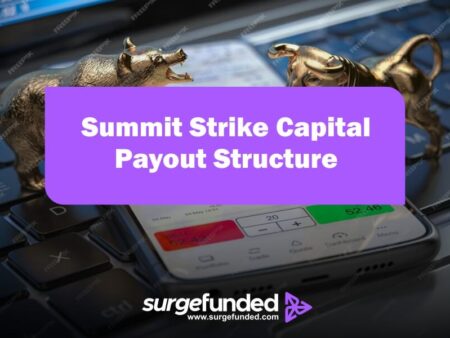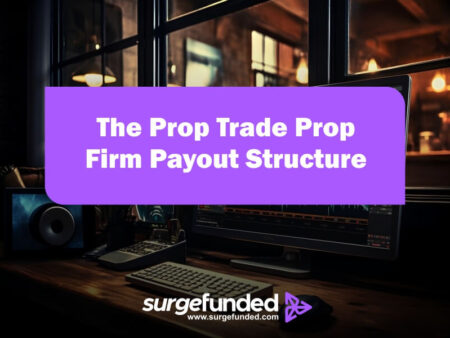Maven Trading payout structure has made a name for itself in the prop trading market with its distinctive payout structure that prioritizes flexibility and profitability. The complexities of Maven Trading payout structure will be examined in this article, along with its operation, advantages for traders, and place in the larger framework of prop firms.
Maven Trading Overview
Maven Trading was established with the goal of giving traders a nurturing atmosphere in which to hone their abilities and succeed financially. It has rapidly become known for its trader-centric philosophy. To suit various trading styles and risk tolerances, the firm provides a variety of funding alternatives and challenges. Maven Trading has developed a platform where traders can prosper with an emphasis on openness and equity.
How Payout Works
Profit Split
The 80% profit share offered by Maven Trading payout schedule is among its most alluring aspects. As a result, traders keep a sizable amount of their earnings, which incentivizes excellent performance. As is common in the prop trading sector, the remaining 20% goes to the prop firm. For experienced traders, Maven Trading is a desirable option because of this split, which is especially advantageous when compared to many other prop firms that usually provide lesser percentages.
Frequency of Payments
Traders at Maven Trading are eligible to seek rewards every 14 days (Bi-weekly), if certain requirements are met. In particular, before requesting a withdrawal, they need to have at least 1% of simulated profit in their account.
For traders who depend on trading as their main source of income or who want to reinvest their profits as soon as possible, this bi-weekly payout schedule makes it possible for them to frequently access their earnings.
Payout Minimum Account Balance
Traders must keep a minimum account balance of $1,000 in order to be eligible for a payment. There can be more fees if the account balance drops below this limit. This criterion protects the firm’s interests while guaranteeing that traders have enough money in their accounts to sustain continuous trading activity.
Procedure for Payout Requests
Traders can start a payout request using Maven Trading platform after fulfilling the eligibility requirements, which include hitting the minimum profit target. After that, the money is moved via a variety of techniques including Deel, Wise, or bitcoin options.
It is crucial to remember that traders are liable for any transaction fees related to their payments, which may differ based on the withdrawal method they select.
Features of the Maven Trading Payout Structure
Buyback Option
The buyback option of Maven Trading payout schedule is one of its unique features. A trader can choose to purchase back the lost drawdown at a price that ranges from 50% to 100% of the loss sustained if they encounter a drawdown on their funded account. For traders, this function offers a safety net that enables them to recover from losses without using up all of their capital. It motivates traders to keep trying successful tactics in the face of failure.
Scaling of Capital
For reliable performers, Maven Trading payout structure provides capital scaling chances.
Traders can expand the size of their account by 25% after they have made five profitable payouts. This scaling feature rewards traders who show steady success over time and encourages long-term profitability.
Phases of Evaluation
Traders must finish one of two assessment programs in order to access funded accounts at Maven Trading:
One-Phase Evaluation
- Profit Goal: Within 30 days, traders must turn a 10% profit.
- Limits of Loss: There is a 3% daily maximum loss cap and a 10% total maximum loss cap.
- Options for Account Size: Traders can select from a range of account sizes, from $5,000 to $400,000.
Two-Phase Evaluation
- Phase One: With a 10% profit target, the conditions are the same as for the one-phase evaluation.
- Phase Two: Traders have 60 days from the end of Phase One to make an extra 5% profit.
- Limits of Loss: The daily and total loss caps are the same as those in Phase One.
By limiting access to funded accounts to only knowledgeable and disciplined traders, these systematic assessments safeguard the firm and its investors.
Advantages for Traders
High Retention of Profits
Traders can keep a sizable amount of their profits thanks to the 80% profit split. This high retention rate fosters a cooperative environment where success benefits both parties by inspiring traders and bringing their interests into line with the firm’s.
Consistent Earnings Access
Long wait times are avoided because of the biweekly payout schedule, which offers consistent access to revenue. For active traders who might require quick access to money for personal expenses or reinvestment, this flexibility is especially helpful.
A helpful Setting
Maven Trading prioritizes establishing a helpful atmosphere for its traders. Its platform offers a wealth of tools and resources, such as advanced analytics and instructional materials, which enable traders to improve their performance and develop their skills.
Industry Background
The proprietary trading sector has clearly shifted in recent years toward payout arrangements that are more trader-friendly. Skilled traders searching for encouraging settings where they can flourish are increasingly drawn to firms like Maven Trading that provide bigger profit splits and quicker payouts.
Due to their stringent withdrawal policies and protracted payout procedures, many traditional prop firms have come under fire. On the other hand, Maven Trading payout schedule creative strategy places it at the forefront of developing a trader-focused environment that values quickness and adaptability.
In conclusion
Maven trading payout structure is one of its most alluring characteristics, which was created with the success of the trader in mind. Maven Trading offers both beginners and seasoned traders an alluring platform with its remarkable 80% profit share, frequent bi-weekly payouts, and special features like the buyback option and capital scaling options.
Firms like Maven Trading that put traders’ interests first by offering flexible payout alternatives are expected to establish new benchmarks in the industry as the proprietary trading landscape develops further.
Maven Trading provides an alluring option supported by cutting-edge features and robust support networks for individuals looking for wealth without sacrificing their financial freedom or having to wait a long time for payouts.
Frequently Asked Questions
1. Maven Trading Profit Split
- The 80% profit share offered by Maven Trading payout schedule is among its most alluring aspects. As a result, traders keep a sizable amount of their earnings, which incentivizes excellent performance. As is common in the prop trading sector, the remaining 20% goes to the prop firm. For experienced traders, Maven Trading is a desirable option because of this split, which is especially advantageous when compared to many other prop firms that usually provide lesser percentages.
2. Maven Trading Payment Frequency
- Traders at Maven Trading are eligible to seek rewards every 14 days (Bi-weekly), if certain requirements are met. In particular, before requesting a withdrawal, they need to have at least 1% of simulated profit in their account. For traders who depend on trading as their main source of income or who want to reinvest their profits as soon as possible, this bi-weekly payout schedule makes it possible for them to frequently access their earnings.
3. Maven Trading Evaluation Phases
One-Phase Evaluation
- Profit Goal: Within 30 days, traders must turn a 10% profit.
- Limits of Loss: There is a 3% daily maximum loss cap and a 10% total maximum loss cap.
- Options for Account Size: Traders can select from a range of account sizes, from $5,000 to $400,000.
Two-Phase Evaluation
- Phase One: With a 10% profit target, the conditions are the same as for the one-phase evaluation.
- Phase Two: Traders have 60 days from the end of Phase One to make an extra 5% profit.
- Limits of Loss: The daily and total loss caps are the same as those in Phase One.


















